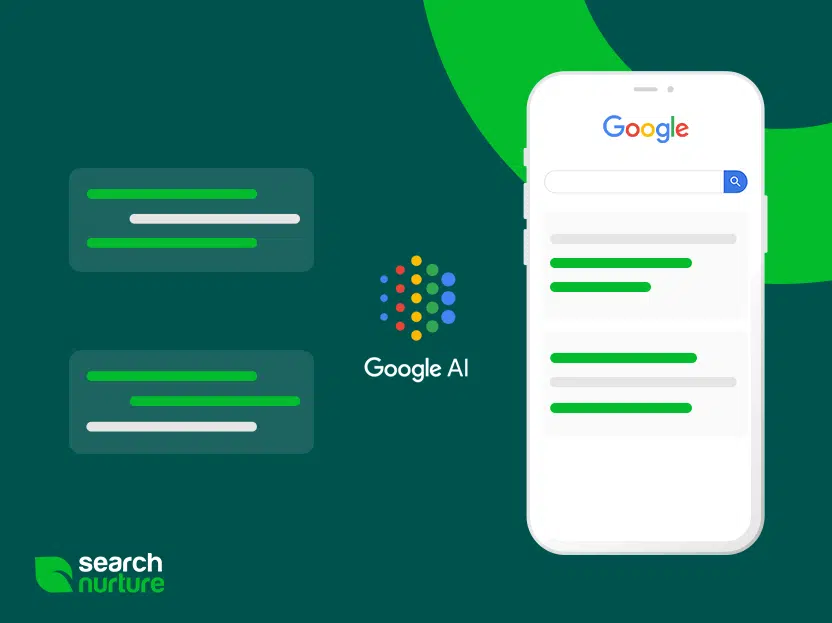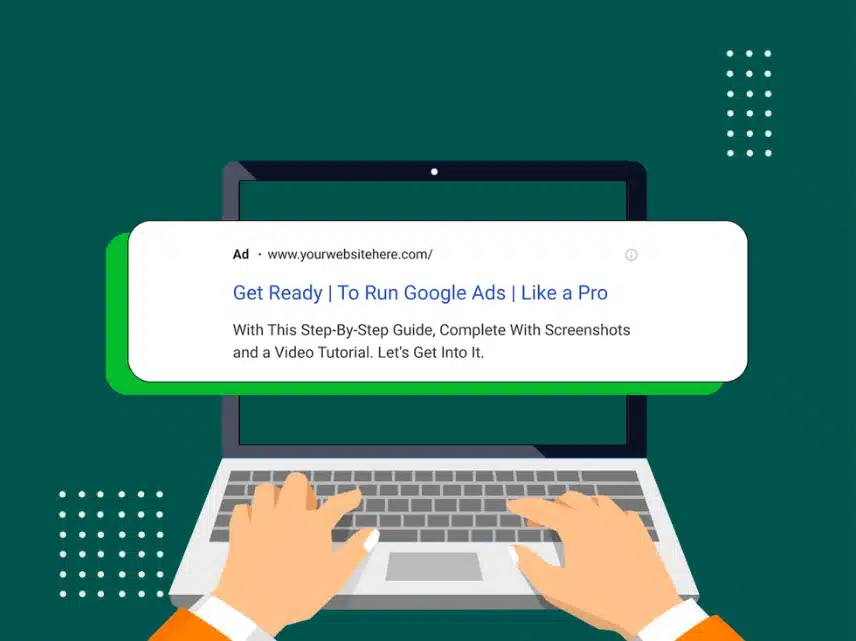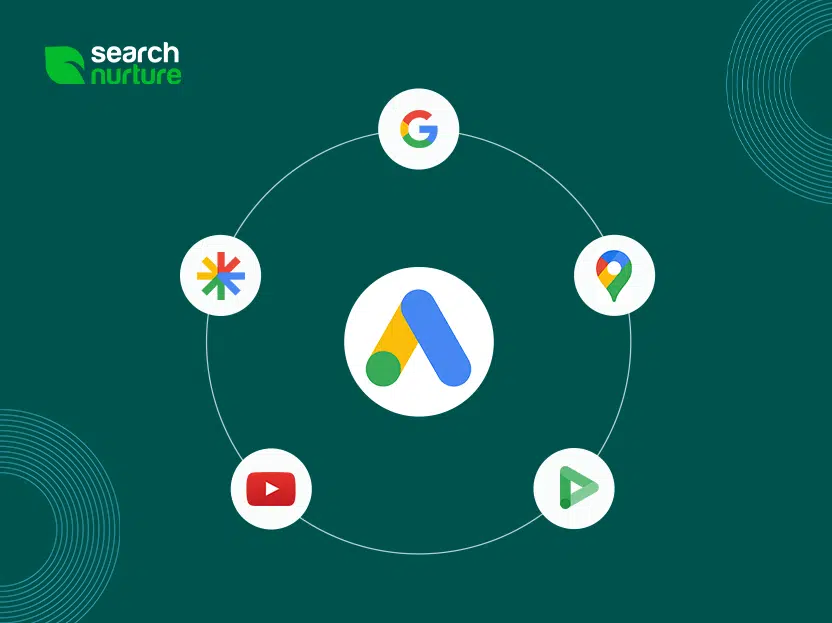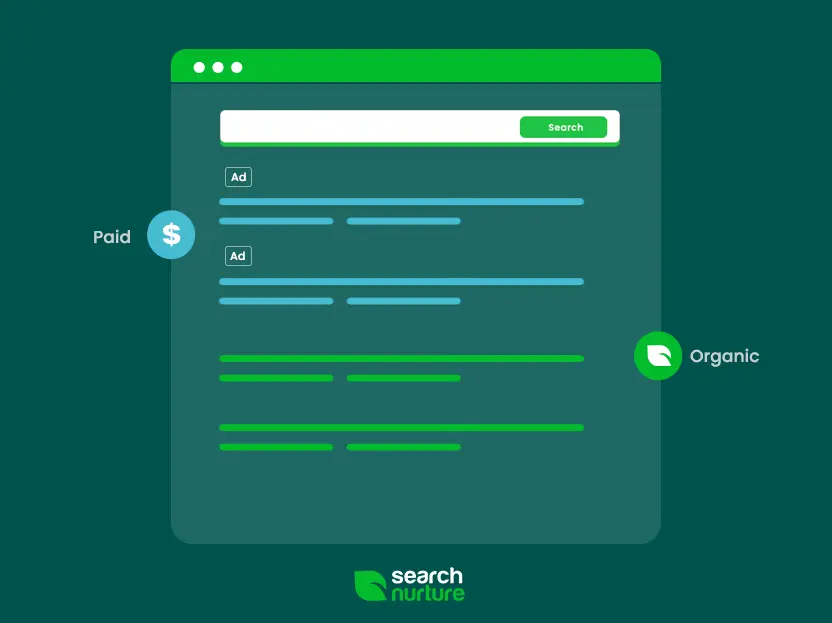Responsive Search Ads (RSAs) is the default Ad type in Google Ads. It was created by Google to maximize your Ads’ efficiency while saving you precious time in both creating and testing your Ads.
This form of Google Ads allows marketers and companies to create as many as fifteen Headlines and four Descriptions at once. With each Headline up to 30 characters and Descriptions up to 90, you can effectively create 900 characters’ worth of copy in thousands of different variations to ensure your Ad always displays unique copy. Google then mixes and matches your copy in a constant string of A/B tests.
With Google showing different Ad variations to users and measuring their impact, it soon starts honing in on the best combinations of Headlines and Descriptions. Given enough time, Google’s Artificial Intelligence (AI) learns which Ads to show to different searchers depending on the keywords they searched for, their devices, past browsing behavior, etc.
Examples of Responsive Search Ads
Google’s Official page includes these examples of Responsive Search Ads:
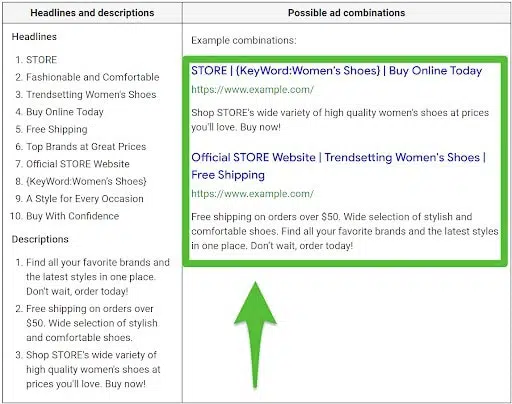
The store’s owner has entered ten Headlines and three Descriptions. Google mixes and matches these to create a seemingly endless stream of unique combinations. Given enough time, it will test them all to find the best-performing ones for you.
In the top Ad, you will notice that one of the Headlines, {KeyWord:Women’s Shoes}, is placed in brackets. Google uses Dynamic Keyword Insertion (DKI) to create an Ad tailored to the search. This lets you enter a variable as a keyword and further increases the uniqueness of your RSA as Google will change the copy depending on the exact keyword used.
Responsive Search Ads Pros and Cons
Responsive Search Ads Pros
Responsive Search Ads offer several advantages compared to regular Ads:
Responsive Search Ads are easier and faster to set up and require far less maintenance than regular Ads. Google does all the heavy work of creating the Ad copy and testing various combinations for the most effective one. Instead of you constantly churning out new copy and testing your Ads, Google does all that for you, showing users Ad copy that is automatically assembled by combining the various copy elements.
As a bonus, RSAs often have higher Click-Through Rates (CTR) than regular Ads.
Google does all that to improve its services to you, so you don’t have to pay extra for it.
Responsive Search Ads Cons
While Responsive Search Ads are easy to set up and often work beautifully, they are not a panacea. In fact, they have several downsides that may make you prefer regular Ads, especially if you are an established brand:
Since RSAs are built using the same templates, your Ads will look pretty similar to those of your competitors. You have little say over your Ads and effectively hand over your campaign to Google’s AI in exchange for the convenience of easily creating Ads.
If you have—or are in the process of building—a strong brand identity, RSAs can hurt you in the long run. Bland-looking Ads don’t contribute to retargeting campaigns and may dilute your message. Since you have no say in the combinations that are made with your visual and textual assets, the results may vary. Some Ads may perform really well while others may be confusing or not even make any sense. Yes, Google’s AI will cut underperforming ones but not before potentially damaging your brand or image.
Responsive Display Ads offer less insight than regular ones. When you audit your Google Ads, RSAs give you an overview of the performance of each asset. However, you only get four states when estimating your ad’s performance: learning, low, good, and best. It would be great if Google could also include information such as which Ad size, combination, or format has performed well instead of asking you to simply trust the AI’s judgment.
In short, RSAs are great for beginner marketers but can hinder more seasoned ones.
Responsive Search Ads vs Expanded Text Ads
How well do Responsive Search Ads compare to Expanded Text Ads? The following list explains the main differences between the two:
RSAs offer 15 Headlines, whereas Expanded Text Ads offer only 3.
RSAs offer 4 Descriptions. Expanded Text Ads offer 2.
Unlike Expanded Text Ads, RSAs optimize your Ads automatically.
RSAs give you 43,680 possible asset combinations, whereas Expanded Text Ads only give you 4.
Google recommends you have one RSA and 3 Expanded Text Ads in every AdGroup.
RSAs are at least as small as Expanded Text Ads—or larger. So, if your audience consists primarily of mobile users, not all assets may display. In many cases, your copy will be trimmed and replaced with ellipses (“…”)
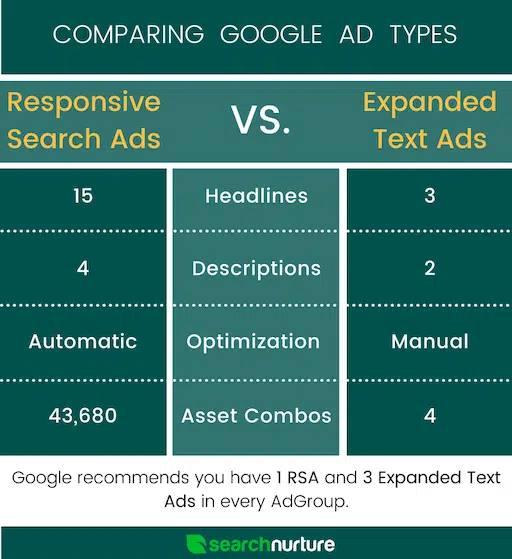
How to Create Responsive Search Ads
To create a Responsive Search Ad, follow the steps below:
1. Open your Google Ads Dashboard
At the left of your Google Ads dashboard, you will find an option to create a new Responsive Search Ad.
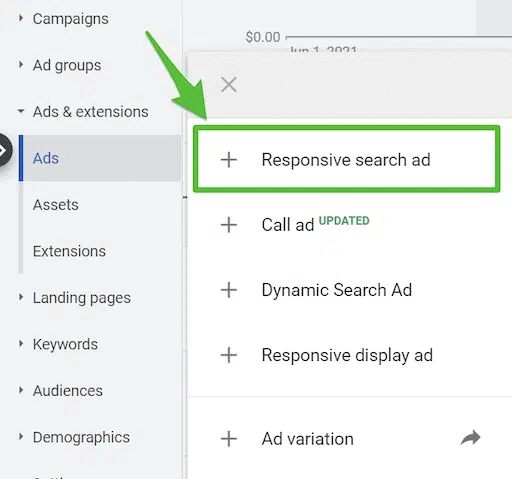
2. Enter your Responsive Search Ad Headlines
You will see a series of rows of Headlines. Enter your copy, keeping in mind it will be mixed and matched by Google’s AI. Try to make sure that all combinations make sense and keep your Headlines unique. Use your keywords as much as possible.
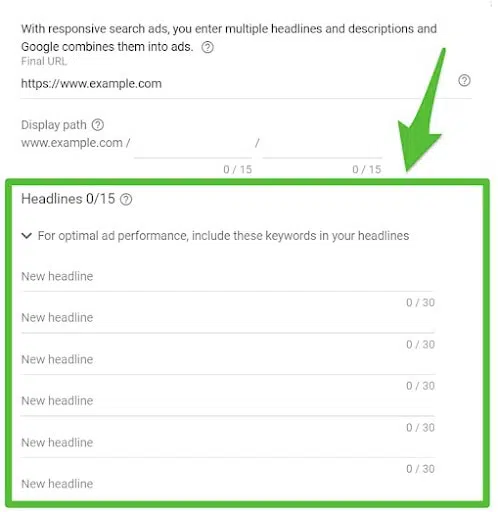
You can also pin a headline to make sure that Google always displays it in the right place. For example, you may wish to start your Ad with your company name. Enter that in the first Headline and pin it to the top. You may also wish to always close with a specific Headline. Pin it to the last position instead of leaving it to Google.
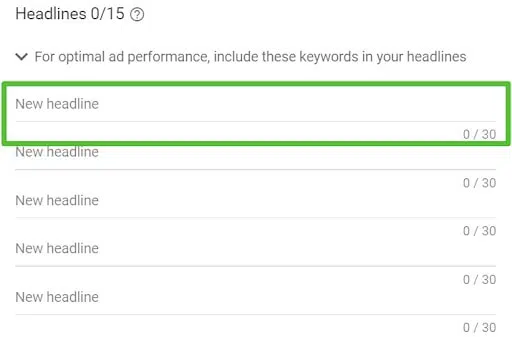
3. Enter Your Responsive Search Ad Descriptions
Next, enter your RSA’s Descriptions. Google gives you up to four Descriptions, each up to 90 characters long. Up to two of these show up at a time in your Ads.
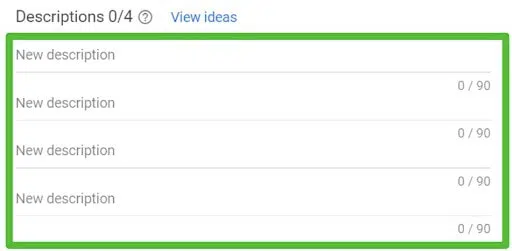
Like your Headlines, you can also pin your Descriptions to make sure they appear in the right place, e.g. when you wish to finish your Ad with a Call-To-Action (CTA). However, it is often best to let Google work its magic uninhibited.
4. Create your Extensions
Finally, you can add Extensions with information such as your phone number to your RSA. You can also specify if you wish for this Extension to appear mostly on mobile platforms, if you wish to bid higher for this Extension to appear, and if you only wish this Extension to show during specific days or hours (e.g. working hours).
Congratulations, your new RSA is now ready! Hit Save and wait for Google to approve it and the visitors to flock to your website. If that fails to happen, it’s time to start analyzing.
Improve Performance with Responsive Search Ads
When you analyze your Ads’ results, you can use a tool like the Google Data Studio to help. Data Studio is a data visualization tool that turns dizzying numbers into an informative report using charts, graphs, data tables, and more. It also lets you generate easy-to-read reports for clients and campaign stakeholders.
If your analysis indicates that you’re not getting the desired results from your Ad, you can try several things to improve it, including using new copy, rearranging your existing copy, or checking with Google to see what can be done to improve your Ad’s performance.
Start with the Ad Strength meter in the upper-right part of your screen to see Google’s recommendations about your Ad copy.

Additional Tips
Improve your copy by utilizing the tips below:
- Don’t place your critical ad copy in the third Headline and/or second Description. These are optional fields and Google will only show your copy if space permits.
- Make sure your Headlines and Descriptions are unique and compelling. If you repeat the same content in two or more of these, you risk ending up with a particularly repetitive Ad. Predictably, boring Ads don’t convert.
- Add a Call-to-Action (CTA) and pin it to the last place to maximize your Descriptions’ impact. Anyone reading your Ad will be steered toward your desired action (e.g. “Learn more,” “10% Off,” “Buy now,” etc.).
- Just because you get up to 90 characters, you don’t have to use them all. People skim over Ads, so short and punchy copy works best.
- Include your keywords in your Headlines and Descriptions to maximize the Ad’s relevance to your audience.
- You can use Dynamic Keyword Insertion (DKI) instead of static copy.
- Use Google’s keyword, Headline, and Description suggestions (based on popular searches) as the basis of your copy.
- If you have pinned some fields, you may need to unpin them. If you haven’t pinned any fields, you may need to pin them. Experiment with your fields but try not to overdo it, as you may inadvertently prevent Google’s AI from doing its job.
Target your RSAs to specific target demographics and locations instead of trying to reach everyone at once.
Getting Started With Google Advertising
In part as a response to the competition between Google Ads and Facebook Ads, Google has developed a suite of AI-assisted tools to help marketers. These include Responsive Search Ads, Google Smart Shopping Campaigns, and many more.
This is good news for marketers, who can use anything from Smart Campaigns to automated bidding and Responsive Search Ads to maximize their advertising budget’s impact.
However, Responsive Search Ads are not for everyone. A mature brand may prefer to maintain full control of its creative and copy. A seasoned marketer may not wish to relinquish the rich metrics offered by an Expanded Text Ad or a customized Display Ad.
Creating the perfect Responsive Search Ad isn’t always easy, especially if you’re not a dedicated marketer with a gift for creating engaging, short, and catchy Headlines.
So, why not focus on what you do best—run your business—and let Search & Nurture create and run your Ads campaigns? Our vast experience with Google Ads means we have a great understanding of how to reach your target audience and boost your sales.


